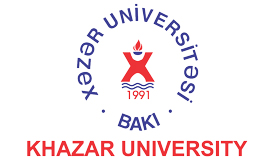International Conference on Materials Science and Research
November 16-18, 2017 Dubai, UAE
High Temperature Materials Development for Power Plant used for Electricity Generation
Loughborough University, UK
Substantial research has been done in recent decades to improve on the basic first choice materials for modern power plant for the production of electricity. Two basic technologies will be reviewed: fossil fuel fired plant; and nuclear plant.
For fossil fired plant the most extreme conditions are to be found in the super heaters and top-end boilers. Materials for this application require high temperature (650°C) strength, oxidation resistance, good thermal conductivity, and low thermal expansion. High alloy ferritic steels with 9-12% Cr are used with grade names such as P91 and P92, HT9, or 1.4914. Development has centred on providing better high temperature strength. This has demanded the use of strong carbide forming elements such as Nb and V, and solution strengthening elements such as Mo and W, but higher carbon is avoided because of weldability issues. High nitrogen combines with strong carbide formers to form Z phase, which, along with sigma phase, limits the stress rupture life. This situation can be improved by redistributing the Z phase or other very stable phases such as HfC, in very fine particulate form, producing very high creep life materials. Advanced heat treatments can also improve creep strength in the ferritic steels. Higher temperatures than 650°C are now being considered, and nickel based alloys, such as IN 618 and 740 are the only materials which will offer the combination of high temperature strength and corrosion resistance required.
Nuclear plant that have undergone the most extensive materials research in recent times are: 1) the light water fission reactors; and 2) fusion tokamak systems.
The light water reactors consist of Zircaloy-clad uranium or plutonium fuel in high pressure water that is contained within a mild steel pressure vessel. These materials have generally performed well in the light water reactors, although there have been some concerns to limit the phosphorus levels in the pressure vessel steels to below 0.001% to prevent embrittling radiation-induced grain boundary phosphorus segregation. Copper precipitation during irradiation at operating temperatures of 300°C has also caused some embrittlement problems. The steam generators have generally relied on Alloys 600 and 690 nickel based alloys. In recent years an alloy more resistant to inter granular stress corrosion cracking, Alloy 625, has been employed.
Fusion reactors present perhaps the most formidable conditions for materials of any of the currently considered power plant systems. The first w all constructional material in the test reactor ITER (International Thermonuclear Experimental Reactor) will eventually be a ferritic steel based on the 9% Cr composition of 1.4914 or P92. One materials development that has accompanied the development of ITER is the production of the worldʼs first reduced activation steel, Eurofer97, which has the long half-life radioactive elements, Co, Ni, Nb and Mo removed. Another development is a novel heat treatment for this steel which reduces the DBTT to acceptably low temperatures (≤ -20°C).
Biography:
Professor Roy Faulkner (Loughborough Materials Ltd) has been involved with nuclear reactor materials research for almost three decades. He was employed as a consultant to UKAEA, Harwell from 1980-90, and has led are search group interested in nuclear reactor materials at Loughborough University since 1990, with funding support from Rolls Royce Naval Marine, EDF, Magnox, EPSRC, and Oak Ridge National Laboratories. His interests are in breeder blanket ferritic ODS steel development for fusion, radiation-induced grain boundary segregation of P in Pressure vessel steels, and radiation induced chromium depletion in austenitic steels. Non- irradiation based interests, but still relevant to the current project proposal, are thermally induced chromium depletion modeling and experimental validation in Alloys 600 and 690, modeling and validation of micro structural evolution in ferritic and austenitic steels, and nickel base alloys, and its relation to creep and fracture toughness properties in these alloys. His overall mission is to provide, by modelling, a better understanding of micro structural changes occurring in high alloy steels and nickel based alloys in irradiation and high temperature environments. This mission is supported by a strong experimental expertise in high resolution microscopy techniques, most of which are available in the Loughborough Materials Characterisation Centre. He is Past-President of the East Midlands Metallurgical Society, Chairman of the IOM3 Publications Committee, and past Chairman of the IOM3 Younger Members Committee. He is also Past-Chairman of the Midlands Microanalysis Group.



